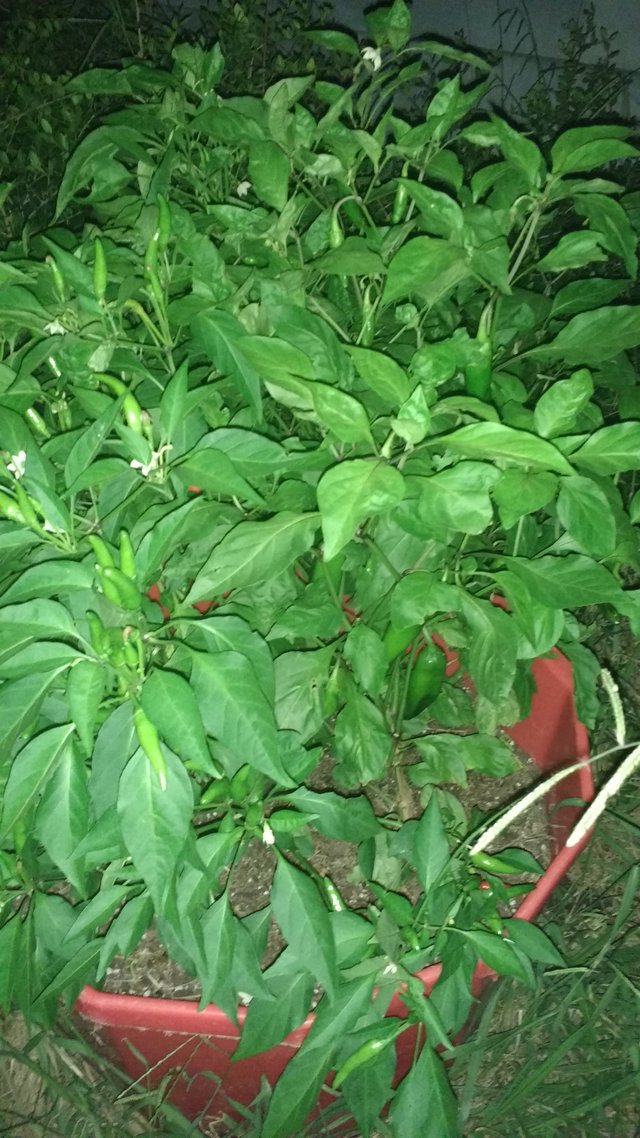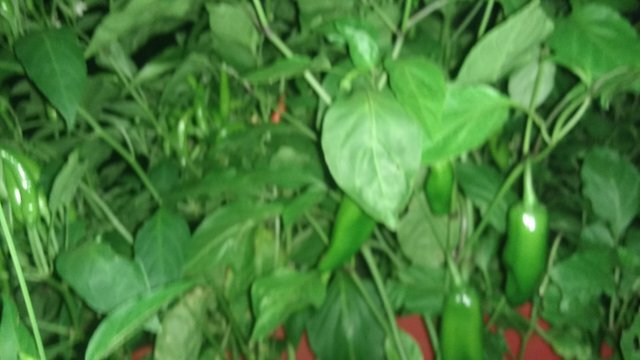My Container Method
So I have recently been working on my Container growing. For a long time I struggled with container growing. However, failure is just an opportunity to learn! In the last few years that is exactly what I have been doing.
One of the problems with container growing is that nutrients often wash out of the soil. Most people compensate for this by applying liquid chemical fertilizers. Being a grower that relies on organic methods of growing, chemical fertilizers are an unacceptable option for me.
So what to do? The first thing is to build the container. In addition to promoting fertility, in my house, I am concerned about cost. Spending a fortune to grow things doesn't make much sense. So I start with the least expensive, non-chemically fertilzed dirt, and compost I can find, usually from a big box stores!
The container pictured below has four peppers in it of differing varieties, one purple bell, one sweet frying pepper, and two varieties of hot pepper. I grew them in an empty livestock protein tub that I got from a cattle raising friend.
First I drilled holes in the bottom of the tub. Then I threw in a thin layer of gravel. The purpose of the gravel is two-fold. First it keeps the soil from compacting, and plugging the drainage holes. Secondly, it gives water somewhere to pool, protecting roots from lack of oxygen while water is evacuated from the container.
Next I borrow from the Hugelculture community, and put a layer of sticks on top of the gravel. The wood also performs multiple functions in the container. For one thing, the wood takes up valuable space in the bottom of the container. This allows the use of less dirt, which again helps control cost.
Additionally, this layer of wood, decomposes gradually, feeding the plants over time. It also promotes the growth of fungal mycelium, which is highly beneficial to plant growth, and to controlling disease. Not only that but it absorbs water, making the container much more resistant to drought! That is very important if you are like me, and forget to water.
At this point, I add a layer of soil, and compost. Now comes the issue of additional feeding for the plants. Usually, I buy three ingredients, and blend them together, a bag of Dr. Earth organic fertilizer, which is according to their description: "Natural blend of feather meal, fish bone meal, cottonseed meal, kelp meal, alfalfa meal, soft rock phosphate, humic acid, mined potassium sulfate, seaweed extract, ecto and endo mycorrhizae", as well as a large box of blood meal, and a large box of bone meal.
I blend these ingredients together, and layer handfuls to lightly cover the soil, with layers of soil until the container is full. Then plant the container, and water well several times over the course of several hours, as it takes water time to absorb into all that fiber.
This method creates a container that will genuinely nourish vegetables to production! Try it, and tell me how it works. The following pictures were taken at night.


You can take a lot of pictures.
I could, but this container is already planted, and I am coming to the very end of my growing season. However, I may do another post soon on the containers that I will be planting out for window growing this winter. However, I usually start those in several weeks.
So does the fertiliser mix slowly release enough food throughout the growing season to keep the plants nourished?
Ive always struggled with growing in containers. Forgetting to water is probably the biggest cause!
I put the peppers in a couple months ago, and haven't fed them since. However, for greens, or something that needs high fertility, I recommend adding more every few weeks. Bloodmeal tends to be long-acting.